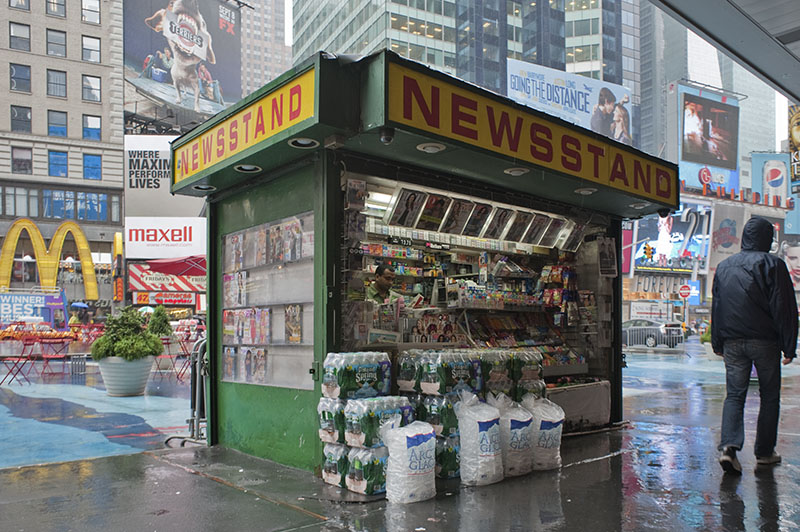
Newsstands in NYC © 2010 JON CRISPIN
You gotta hand it to the newsstand. It’s nothing if not resilient.
In spite of a dysfunctional distribution model and declining sales over the years, they still exist and account for about 10% of all magazine sales. For some publishers like Bauer, the newsstand remains a vital part of the sales funnel.
“The drop in newsstand sales has been precipitous and consistent, double-digit year-over-year declines have been par for the course for more than a decade,” writes Caysey Welton in Folio:. “Still, there have been outliers, such as good performers at Bauer Media Group with Women’s World and First for Women, as well as Meredith’s People, along with a shrinking list of other titles that are still able to generate worthwhile revenue.”
(Interesting side note: it was Bauer, you may recall, that last summer said rather than pony up to fix the broken distribution model, they were going to try a different approach, distributing their magazines via consumer good wholesalers.)
But what are they saying now, as shopping drops off during the stay-at-home orders?
“Initially, CEO of Bauer Media Group, Steven Kotok, suggests there was a slight uptick in sales as shoppers prepared to hunker down,” Welton writes. “Likewise, Meredith Magazines president, Doug Olson, acknowledged the same trend. But both implied they don’t anticipate that being a long-term trend.”
Still, Kotok admitted at the time that he wouldn’t be surprised to see some traffic drop off. Other publishers are seeing some softening in sales, especially (obviously) in airport-based newsstands, and in retail store closings, especially Barnes & Noble.
Bauer, on the other hand, sees most of its sales in places where people are still shopping… grocery stores. And they remain optimistic, providing the supply chain stays intact.
“Paper seems to be flowing through the system,” Kotok says. “Printers are essential industries. The flow of information is very important in this situation. Most paper is made in North America. If it were 100% overseas it would be more stressful, but you’re always concerned about the viability of the partners you’re working with.”
Both Kotok and Meredith’s President Doug Olson acknowledge the challenge is to keep base rates up, and that becomes harder when outlets are physically closed. Yet both remain upbeat and seem confident that this is, indeed, a temporary downturn. For Kotok, it comes down to the magazine’s human connection to its readers.
“The topics we cover: inspiration, health, food, are just as relevant now,” Kotok explained in an interview with Samir Husni. “Other areas, like news, there’s more interest in maybe other things, where there’s less interest in some, but I think for us our core pillars are just as relevant.”
Will the newsstand make it? I believe that’s too broad a question. Will magazine publishers figure out how to get through this and continue delivering print magazines to their readers? That, I believe, is a firm yes.

September 23, 2020, 1:10 pm